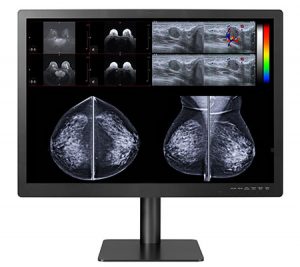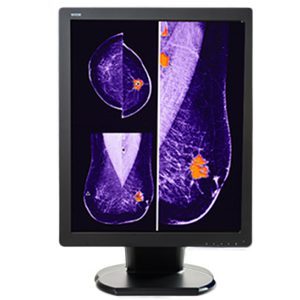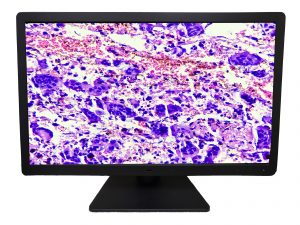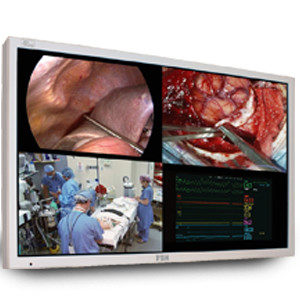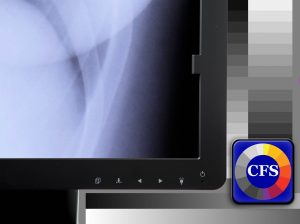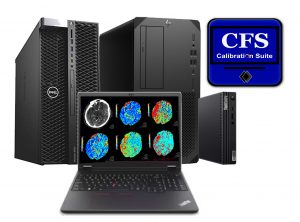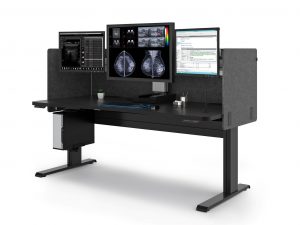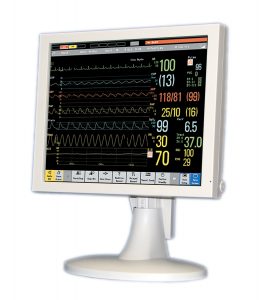Reduce Fatigue in Radiology
Each year, more than 1,100 new radiologists complete their diagnostic training and take jobs in hospitals, medical clinics, and diagnostic laboratories. These new doctors specializing in radiology understand the demands of their new jobs, but they may not fully understand just how much fatigue plays a factor.
It’s likely that as a radiology resident, these medical professionals learned about working 10- to 12-hour days and how that can cause stress and physical fatigue in the workplace. In addition to working long hours, causes include the time of day a person works, the time spent on a task, and environmental issues like working in a loud office space.
But constant work reviewing radiology images — day after day, year after year — does more than just make one want to take a nap. There is such a thing as visual fatigue that differs from simply being tired, and it can start to take a toll on radiology professionals anywhere from halfway to two-thirds of the way through their workdays.
Visual fatigue in the workplace is also more than just eyestrain. It encompasses a lack of focus and a reduction in the doctor’s ability to use visual search patterns that can help with accurate diagnoses. At Emory University in Atlanta, Dr. Elizabeth Krupinski is studying the part that visual fatigue plays in a radiologist’s typical day. Her research team found a statistically significant drop in accuracy of 4 percent when comparing the work of both faculty and residents at the beginning of the day and after 8 hours. That means that fatigue in the workplace may be contributing to diagnostic errors.
Another study conducted by Dr. Richard Gunderman from the Indiana University School of Medicine in 2016 and published in the Journal of the American College of Radiology connects radiologists and a lack of happiness or satisfaction with their work. Dr. Gunderman points to a lack of control in their environments, a need for increased interpersonal relationships in the workplace, and the need to feel they’re making a difference as factors that cause this unhappiness in radiology professionals. The first issue — a lack of control — comes from long workdays and, quite possibly, from the associated physical and visual fatigue that comes from reviewing images all day.
How Can Radiologists Reduce Fatigue in the Workplace?
It’s clear that professionals need to be empowered to take steps toward reducing fatigue in the workplace and, ultimately, increase job satisfaction. Medscape’s 2015 report on physician burnout found that radiologists are most likely of all the medical professions to burn out, and that needs to change in order to improve the lives of current radiologists and attract new professionals to the field. Those who feel burn out are more likely to make mistakes, have less motivation, and become more easily bothered by interactions with patients and colleagues.
Fortunately, there are three main changes to make to reduce fatigue in the workplace.
- Technology.
Computer assisted detection, or CAD, as well as high-resolution image analysis tools can help to highlight inconsistencies in radiologic images so doctors can focus quickly on the problem. Better interoperative tools guide better overall patient outcomes, so the benefit isn’t just for radiologists.Especially important to reducing visual fatigue in radiology: High-quality, medical-grade monitors. Radiologists literally spend hours each day staring at screens, and these need to be the top of the line, with high contrast, high resolution, and features like glare reduction, filtering of ambient light, and automatic calibration for accuracy.
- Ergonomics.
Ergonomics play a direct role in radiology fatigue, as each workstation must be customized to the individual’s needs based on his or her size and preferences. No longer can one generic workstation be used by whichever radiologist got there first; instead, ergonomic radiology workstations must be carefully adjusted to the radiologist to prevent fatigue from setting in. The radiology monitor must be positioned at the right place in conjunction with the viewer’s eyeline. As well, viewing conditions need to be optimized to reduce problems with glare and ambient light that can’t be eliminated by the choice of a high-end monitor. Chairs must fit the user to avoid neck and back strain and encourage proper posture. Ideally, the ergonomic workstation should be adjustable to reduce radiology fatigue by encouraging natural, healthy movement. The workstation could be converted from sitting to standing every half-hour to hour to prevent the user from getting strains associated from not moving or from hunching over a keyboard.
- Awareness.
Radiologists should be better taught about the impacts of fatigue in the workplace. Management and colleagues should work to create a clinic or hospital culture that promotes regular breaks and scheduled viewing times. Especially because regular breaks are shown to improve diagnostic accuracy, it may be helpful to integrate monitoring tools that help to check visual fatigue. Timers can encourage radiologists to reduce their fatigue by following the 20-20-20 rule that every 20 minutes, a computer user should look at something 20 feet away for 20 seconds to reduce visual strain.
Why Does Reducing Fatigue in the Workplace Matter?
Professionals used to working long hours and staring at diagnostic images may not fully understand the need for regular breaks, software tools, and ergonomic chairs to reduce radiology fatigue. But reducing fatigue is more than just giving perks to hard-working doctors. The right medical grade displays can help radiologists work faster with fewer mistakes, and the right ergonomic workstation can prevent muscle strain and discomfort that distracts from full focus.
In addition, radiologists who take more control over their working conditions and their schedules may work longer in the profession with a greater degree of job satisfaction, a factor that can influence the entire culture of a clinic or hospital. Increasing awareness of the importance of the quality and resolution of the tools used, and the need for regular breaks to reduce eye strain, are important to improving the work and accuracy of radiologists — a goal that every medical facility should strive for.
Double Black Imaging provides high-resolution medical grade monitors for use in a variety of diagnostic settings. We also offer a line of ergonomic furniture designed specifically for the needs of radiologists. Our experts can help design and install workstations for radiologists that improve comfort, reduce the impacts of fatigue in radiology, and help radiologists with focus and accuracy.
Contact the medical imaging experts today to learn more about our full line of medical displays and ergonomic workstations.
